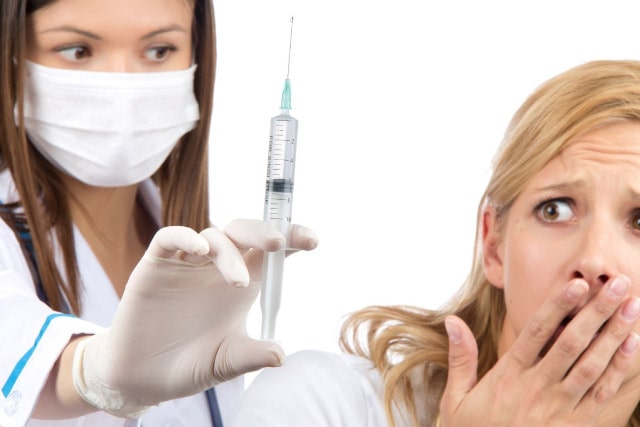Injections become needle-free thanks to laser technology and Bubble Gun
To counter this phenomenon, the research team is developing a new needle-free medical device, which allows the administration of drugs that were previously injected exclusively with traditional syringes.
The device was called "bubble guns” and uses laser technology to administer “virtual injections” that do not cause any kind of pain in the patient.
Since fear of needles is extremely common, this innovative route of administration could also be applied in the global vaccination campaign against Covid-19. It will also allow the reduction of the risk of contamination associated with traditional injection techniques and of infection resulting from the practices of reusing needles present in some Third World countries.
La ricerca dedicata agli iniettori a getto senza ago azionati dall’energia laser è aumentata nell’ultimo decennio. In questo caso, l’assorbimento dell’energia ottica da parte del liquido provoca una bolla a crescita esplosiva. Questa bolla sposta il resto del liquido, determinando un rapido getto microfluidico che può penetrare nella pelle. Questa tecnica consente un controllo preciso dei volumi (da pL a µL) e delle profondità di penetrazione (da µm a mm). Inoltre, queste iniezioni possono essere regolate senza cambiare il dispositivo, variando parametri come la potenza del laser, il diametro del raggio e il livello di riempimento del contenitore del liquido.
“The entire administration process is faster than a mosquito bite and does not cause any pain
In one millisecond, the glass capsule containing the solution to be injected is heated by the laser beam. This allows for the formation of a bubble which is then expelled at a speed of 100 km/h.
“It is precisely the high speed that allows penetration of the skin without causing any damage. No type of skin lesion has ever been found in subjects undergoing this procedure,” explains Rivas.
There testing phase on tissue samples was successfully concluded thanks to a European Union funding of 1.5 million euros. The recruitment phase of volunteers which will precede human trials has now begun.
This phase will involve the collaboration between a new startup and the pharmaceutical industry for the definition of the test and marketing phases of the "Bubble Gun" technology.
Source: https://bubble-gun.eu/
Related news: Jet injectors: Perspectives for small volume delivery with lasers
Note:
La tecnologia per metodi senza ago per l’iniezione a getto di liquido utilizza dispositivi microfluidici e termocavitazione, con energia laser relativamente bassa e basso costo di fabbricazione per un dispositivo di iniezione.
La formazione e il collasso delle bolle è anche noto come cavitazione. Esistono diversi modi per farlo, ad esempio con ultrasuoni e laser. La termocavitazione in questo caso utilizza l’energia di un laser a onda continua per produrre transizioni di fase del liquido in bolle di gas.
in Messina, for the first time, a needle-free syringe was used to administer the Anti-covid vaccine, but it was a different technology.
